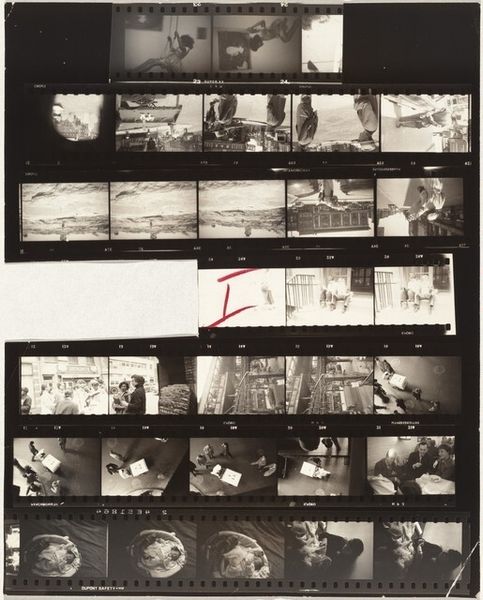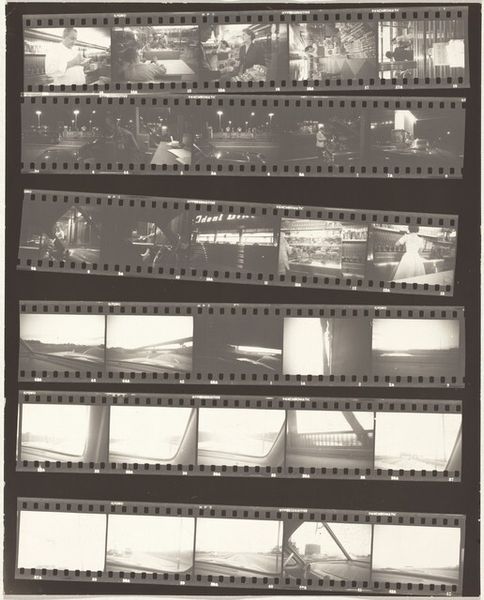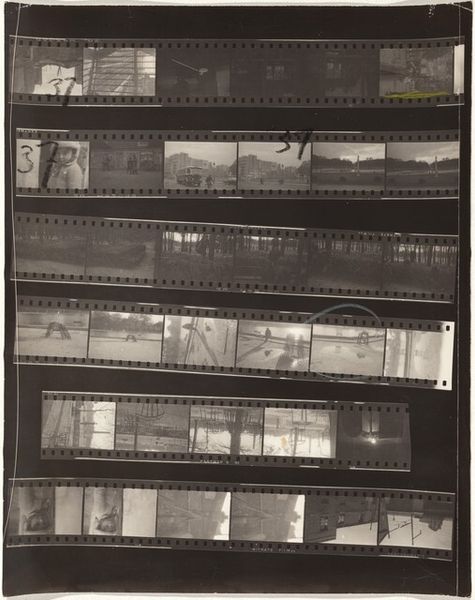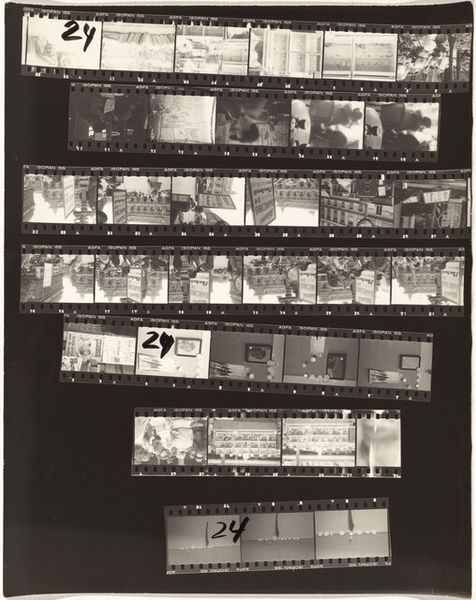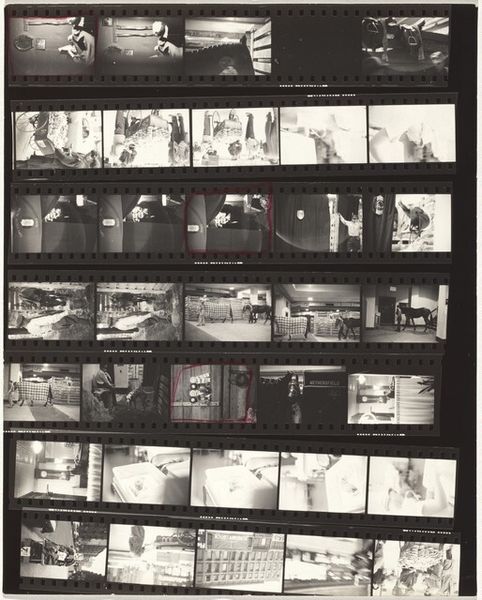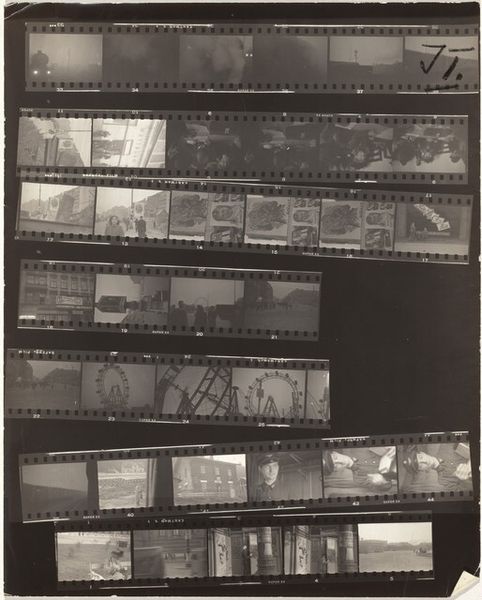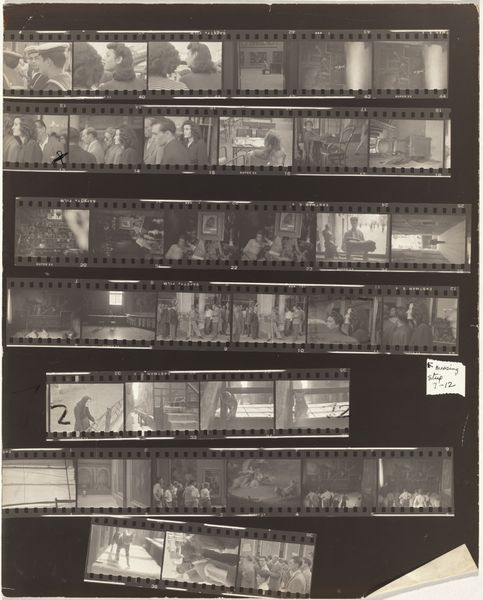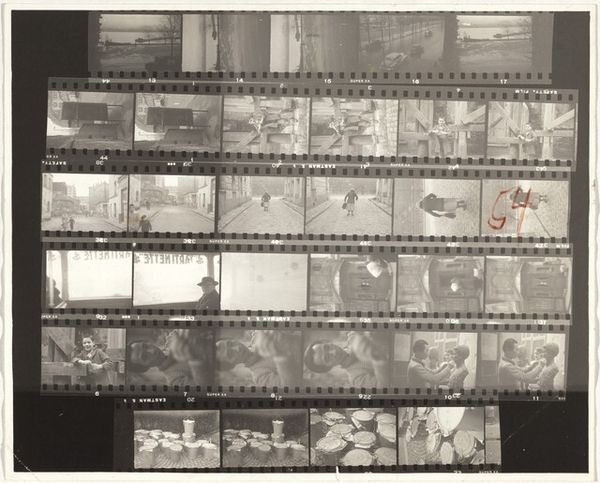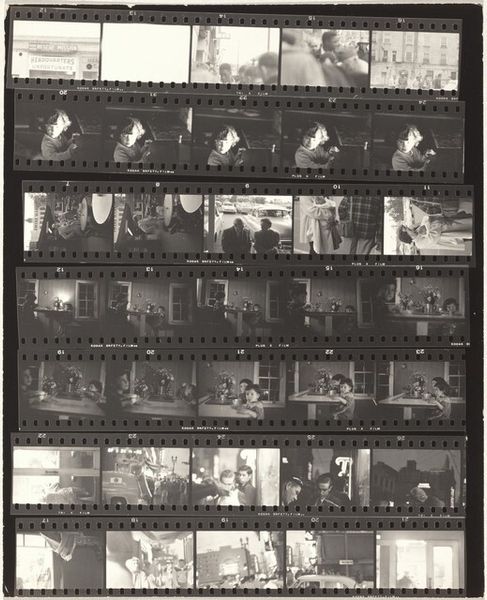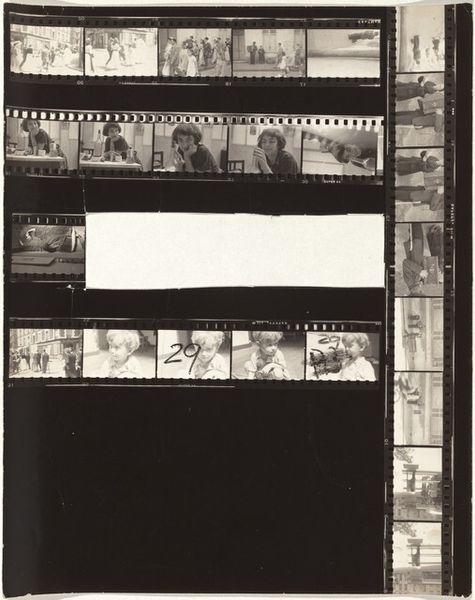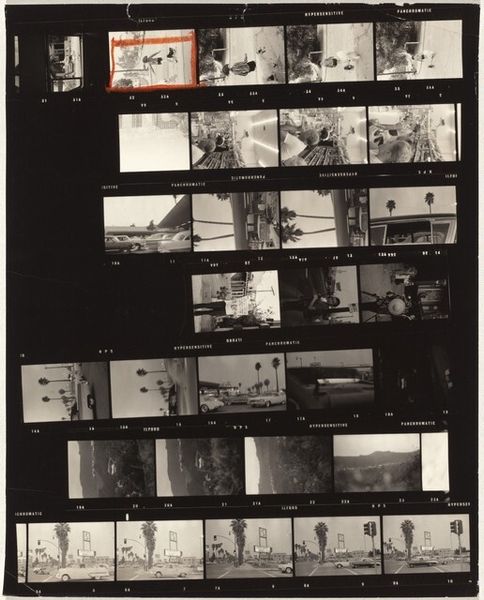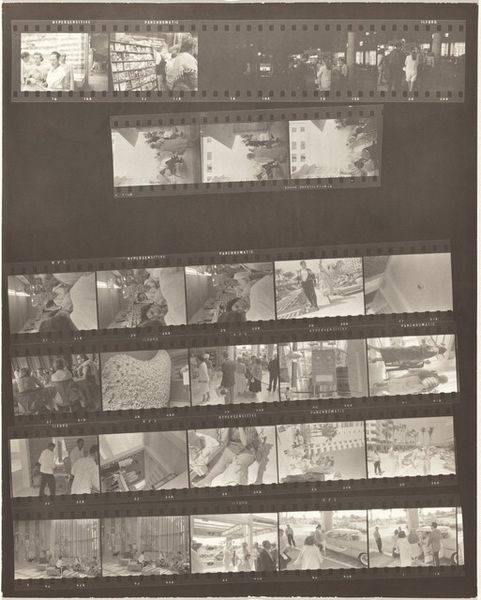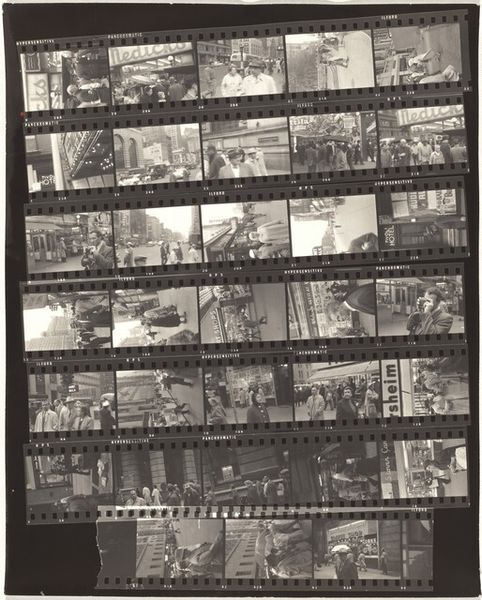
photography
#
portrait
#
film photography
#
landscape
#
archive photography
#
street-photography
#
photography
#
photojournalism
#
group-portraits
#
cultural celebration
#
modernism
Dimensions: overall: 25.3 x 20.2 cm (9 15/16 x 7 15/16 in.)
Copyright: National Gallery of Art: CC0 1.0
Editor: Here we have Robert Frank's " 'I am an American' day—New York City" from 1957. It's a photography piece, specifically a film strip laid out, raw and unfiltered, with all these little windows into a specific day. What really grabs me is the way it showcases the materials themselves—the celluloid, the sprocket holes, even that little arrow note. How do you interpret this work, particularly in terms of its materiality and context? Curator: Precisely! Look closely at how Frank presents the material evidence of production. We aren't simply presented with finished images, but the *means* by which those images were captured and potentially selected. This reveals so much about Frank’s process, blurring the lines between documentary and subjective narrative. Note the repetition of the “American Day” signs alongside more mundane snapshots. Editor: That's interesting, because I immediately read the layout as a very artistic choice. But you're saying it challenges this perception of high art? Curator: Consider the labour involved. A roll of film capturing a social event, followed by a deliberate arrangement highlighting process. It subtly critiques the constructed nature of 'Americanness', reminding us it's not just a polished ideal, but something manufactured and consumed, both literally with those printed banners and figuratively, with the images themselves. How does the presence of that handwritten note impact your understanding? Editor: It feels so personal! Almost like sneaking into the artist's workspace and rummaging around. But if we strip away the photo's subjects – the people, the cars, the signs – aren't we still left with a study in film and printing, an experiment with material and medium? Curator: Absolutely. And remember, the mass production of images like these contributed to a changing social landscape. The rise of photography altered how we consume information and perceive reality, a change deeply rooted in industrial capabilities. The material making becomes central to the meaning itself. Editor: This has definitely changed how I see it. Focusing on the medium makes the work much more critical. Thanks! Curator: My pleasure! Remember, the devil is always in the details…of production.
Comments
No comments
Be the first to comment and join the conversation on the ultimate creative platform.
